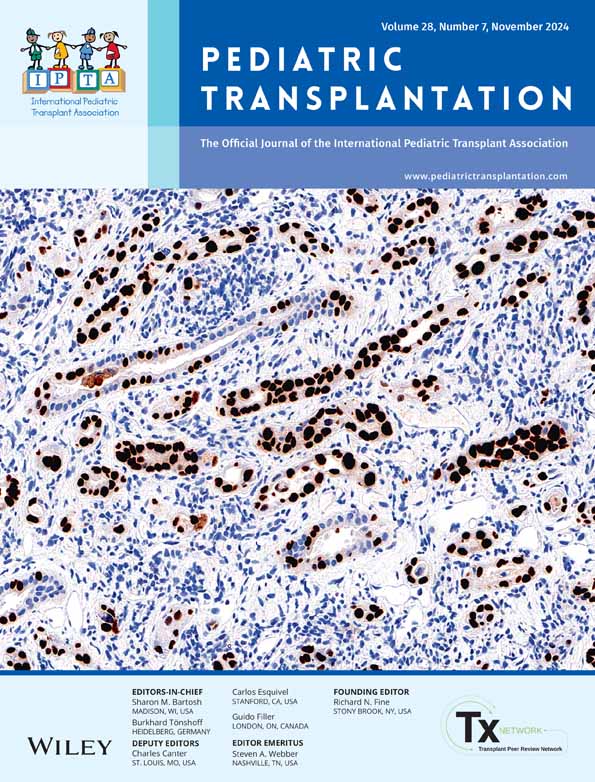Is Liver Transplantation Alone an Effective Treatment for Homozygotic Familial Hypercholesterolemia in Children?
Funding: The authors received no specific funding for this work.
ABSTRACT
Aim
To examine the long-term results and treatment effectiveness of liver transplantation (LT) in the treatment of homozygous familial hypercholesterolemia (HoFH) in children and adolescents.
Method
Patients who underwent LT due to HoFH between 2007 and 2023 were included in the study. The patients' demographic data, clinical findings, preoperative and postoperative laboratory examinations, transplantation complications, and postoperative disease courses were evaluated.
Results
There were five boys with an average age of 6.2 (median: 6, range 4–10) years in the study. The average total cholesterol level of the patients before transplantation was 923 (median: 950, range: 780–1002) mg/dL and the average LDL-cholesterol level was 864 (median: 852, range: 770–957) mg/dL. No patients died of transplant-related complications. After an average follow-up of 9.2 (median: 9, range: 1.5–16) years, the average total cholesterol level of the patients was 197 (median: 164, range: 137–359) mg/dL, and the average LDL-cholesterol level was 138 (median: 92, range: 85–313) mg/dL. Four (80%) patients developed atherosclerotic cardiovascular disease during follow-up, and two (40%) died of this cause.
Conclusion
LT in the treatment of HoFH did not help our patients reach the target LDL-cholesterol level after transplantation and did not prevent the development of cardiovascular disease. Therefore, LT alone is not curative in the treatment of HoFH.
Conflicts of Interest
The authors declare no conflicts of interest.
Open Research
Data Availability Statement
The data that support the findings of this study are available from the corresponding author upon reasonable request.




